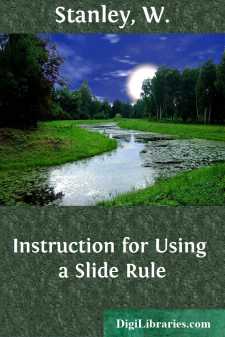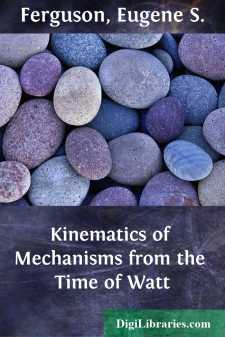Categories
- Antiques & Collectibles 13
- Architecture 36
- Art 48
- Bibles 22
- Biography & Autobiography 813
- Body, Mind & Spirit 142
- Business & Economics 28
- Children's Books 17
- Children's Fiction 14
- Computers 4
- Cooking 94
- Crafts & Hobbies 4
- Drama 346
- Education 46
- Family & Relationships 57
- Fiction 11829
- Games 19
- Gardening 17
- Health & Fitness 34
- History 1377
- House & Home 1
- Humor 147
- Juvenile Fiction 1873
- Juvenile Nonfiction 202
- Language Arts & Disciplines 88
- Law 16
- Literary Collections 686
- Literary Criticism 179
- Mathematics 13
- Medical 41
- Music 40
- Nature 179
- Non-Classifiable 1768
- Performing Arts 7
- Periodicals 1453
- Philosophy 64
- Photography 2
- Poetry 896
- Political Science 203
- Psychology 42
- Reference 154
- Religion 513
- Science 126
- Self-Help 84
- Social Science 81
- Sports & Recreation 34
- Study Aids 3
- Technology & Engineering 59
- Transportation 23
- Travel 463
- True Crime 29
Instruction for Using a Slide Rule
by: W. Stanley
Publisher:
DigiLibraries.com
ISBN:
N/A
Language:
English
Published:
1 year ago
Downloads:
29
Categories:
*You are licensed to use downloaded books strictly for personal use. Duplication of the material is prohibited unless you have received explicit permission from the author or publisher. You may not plagiarize, redistribute, translate, host on other websites, or sell the downloaded content.
Description:
Excerpt
[Transcriber's Notes]Conventional mathematical notation requires specialized fonts and
typesetting conventions. I have adopted modern computer programming
notation using only ASCII characters. The square root of 9 is thus
rendered as square_root(9) and the square of 9 is square(9).
10 divided by 5 is (10/5) and 10 multiplied by 5 is (10 * 5 ).
The DOC file and TXT files otherwise closely approximate the original
text. There are two versions of the HTML files, one closely
, and a second with images of the slide rule
settings for each example.
By the time I finished engineering school in 1963, the slide rule was a
well worn tool of my trade. I did not use an electronic calculator for
another ten years. Consider that my predecessors had little else to
use--think Boulder Dam (with all its electrical, mechanical and
construction calculations).
Rather than dealing with elaborate rules for positioning the decimal
point, I was taught to first "scale" the factors and deal with the
decimal position separately. For example:
1230 * .000093 =
1.23E3 * 9.3E-5
1.23E3 means multiply 1.23 by 10 to the power 3.
9.3E-5 means multiply 9.3 by 0.1 to the power 5 or 10 to the power -5.
The computation is thus
1.23 * 9.3 * 1E3 * 1E-5
The exponents are simply added.
1.23 * 9.3 * 1E-2 =
11.4 * 1E-2 =
.114
When taking roots, divide the exponent by the root.
The square root of 1E6 is 1E3
The cube root of 1E12 is 1E4.
When taking powers, multiply the exponent by the power.
The cube of 1E5 is 1E15.
[End Transcriber's Notes]
INSTRUCTIONS
for using a
SLIDE
RULE
SAVE TIME!
DO THE FOLLOWING INSTANTLY WITHOUT PAPER AND PENCIL
MULTIPLICATION
DIVISION
RECIPROCAL VALUES
SQUARES & CUBES
EXTRACTION OF SQUARE ROOT
EXTRACTION OF CUBE ROOT
DIAMETER OR AREA OF CIRCLE
INSTRUCTIONS FOR USING A SLIDE RULE
The slide rule is a device for easily and quickly multiplying, dividing
and extracting square root and cube root. It will also perform any
combination of these processes. On this account, it is found extremely
useful by students and teachers in schools and colleges, by engineers,
architects, draftsmen, surveyors, chemists, and many others. Accountants
and clerks find it very helpful when approximate calculations must be
made rapidly. The operation of a slide rule is extremely easy, and it is
well worth while for anyone who is called upon to do much numerical
calculation to learn to use one. It is the purpose of this manual to
explain the operation in such a way that a person who has never before
used a slide rule may teach himself to do so.
DESCRIPTION OF SLIDE RULE
The slide rule consists of three parts (see figure 1). B is the body of
the rule and carries three scales marked A, D and K. S is the slider
which moves relative to the body and also carries three scales marked B,
CI and C. R is the runner or indicator and is marked in the center with
a hair-line. The scales A and B are identical and are used in problems
involving square root. Scales C and D are also identical and are used
for multiplication and division. Scale K is for finding cube root. Scale
CI, or C-inverse, is like scale C except that it is laid off from right
to left instead of from left to right. It is useful in problems
involving reciprocals.
MULTIPLICATION
We will start with a very simple example:
Example 1: 2 * 3 = 6
To prove this on the slide rule, move the slider so that the 1 at the
left-hand end of the C scale is directly over the large 2 on the D scale
(see figure 1). Then move the runner till the hair-line is over 3 on the
C scale. Read the answer, 6, on the D scale under the hair-line. Now,
let us consider a more complicated example:
Example 2: 2.12 * 3.16 = 6.70
As before, set the 1 at the left-hand end of the C scale, which we will
call the left-hand index of the C scale, over 2.12 on the D scale (See
figure 2). The hair-line of the runner is now placed over 3.16 on the C
scale and the answer, 6.70, read on the D scale.
METHOD OF MAKING SETTINGS
[This 6 inch rule uses fewer minor divisions.]
In order to understand just why 2.12 is set where it is (figure 2),
notice that the interval from 2 to 3 is divided into 10 large or major
divisions, each of which is, of course, equal to one-tenth (0.1) of the
amount represented by the whole interval. The major divisions are in
turn divided into 5 small or minor divisions, each of which is one-fifth
or two-tenths (0.2) of the major division, that is 0.02 of the
whole interval. Therefore, the index is set above
2 + 1 major division + 1 minor division = 2 + 0.1 + 0.02 = 2.12.
In the same way we find 3.16 on the C scale. While we are on this
subject, notice that in the interval from 1 to 2 the major divisions are
marked with the small figures 1 to 9 and the minor divisions are 0.1 of
the major divisions. In the intervals from 2 to 3 and 3 to 4 the minor
divisions are 0.2 of the major divisions, and for the rest of the D (or
C) scale, the minor divisions are 0.5 of the major divisions.
Reading the setting from a slide rule is very much like reading
measurements from a ruler. Imagine that the divisions between 2 and 3 on
the D scale (figure 2) are those of a ruler divided into tenths of a
foot, and each tenth of a foot divided in 5 parts 0.02 of a foot long.
Then the distance from one on the left-hand end of the D scale (not
shown in figure 2) to one on the left-hand end of the C scale would he
2.12 feet. Of course, a foot rule is divided into parts of uniform
length, while those on a slide rule get smaller toward the right-hand
end, but this example may help to give an idea of the method of making
and reading settings....




